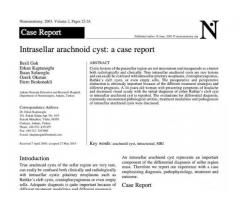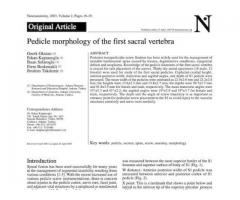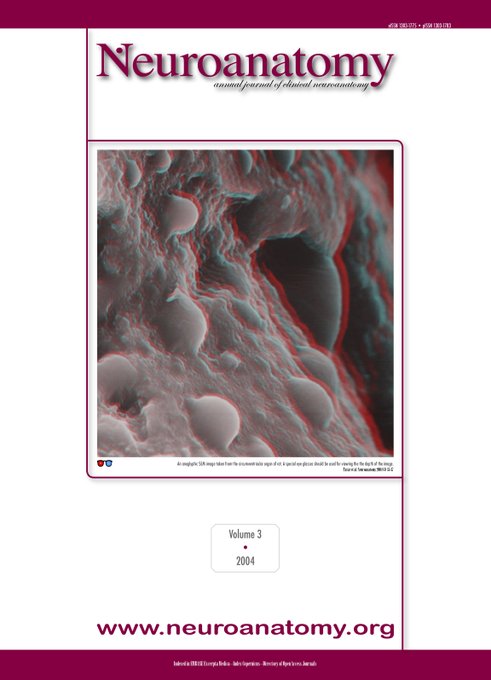Ossification of interclinoid ligament and its clinical significance
- Location: Çankaya, Ankara, Turkey
Ozdogmus O, Saka E, Tulay C, Gurdal E, Uzun I, Cavdar S.
The ossification of ligamentous structures in various part of the body may result in clinical problems. The osseous interclinoid ligament is an underestimated structure in the middle cranial fossa. Early studies on the interclinoid ligament has been conducted on either dry skull, fixed adult / fetus cadavers. The present study states data on fresh autopsy cases. The frequency of ossification of the interclinoid ligament were investigated on 50 autopsy cases bilaterally. Bilaterally complete ossification of interclinoid ligament was found in only three male autopsy cases (6%). The length of the interclinoid ligament was measured 8.95 mm ± 0.92 on the left side and 9.20 mm ± 0.87 on the right side. Statistical analysis showed no correlation between age, side and frequency of ossification of the interclinoid ligament. The ligamentous or bony interclinoid connections have important neuronal and vascular relations and are both clinically and surgically important. The knowledge of detailed anatomy of the interclinoid ligament can increase the success of diagnostic evaluation and surgical approaches to the region. © Neuroanatomy. 2003; 2: 25-27.

Neuroanatomy № 18 | http://neuroanatomy.org/18
Related articles
-
 Intrasellar arachnoid cyst: a case reportFreeVolume 2 [2003] Çankaya (Ankara) 09/01/2023Gok B, Kaptanoglu E, Solaroglu I, Okutan O, Beskonakli E. Cystic lesions of the parasellar region are not uncommon and masquerade as a tumor both radiologically and clinically. True intrasellar arachnoid cysts are rare lesions and can easily be confu...
Intrasellar arachnoid cyst: a case reportFreeVolume 2 [2003] Çankaya (Ankara) 09/01/2023Gok B, Kaptanoglu E, Solaroglu I, Okutan O, Beskonakli E. Cystic lesions of the parasellar region are not uncommon and masquerade as a tumor both radiologically and clinically. True intrasellar arachnoid cysts are rare lesions and can easily be confu... -
 Computer aided three dimensional reconstruction course, March 7-8, 2003, Hacettepe University, AnkarFreeVolume 2 [2003] Çankaya (Ankara) 03/01/2023Demiryurek D. No abstract available. © Neuroanatomy. 2003; 2: 20-21.
Computer aided three dimensional reconstruction course, March 7-8, 2003, Hacettepe University, AnkarFreeVolume 2 [2003] Çankaya (Ankara) 03/01/2023Demiryurek D. No abstract available. © Neuroanatomy. 2003; 2: 20-21. -
 Pedicle morphology of the first sacral vertebraFreeVolume 2 [2003] Çankaya (Ankara) 03/01/2023Okutan O, Kaptanoglu E, Solaroglu I, Beskonakli E, Tekdemir I. Posterior transpedicular screw fixation has been widely used for the management of unstable lumbosacral spine caused by trauma, degenerative conditions, congenital defects and neoplasms. ...
Pedicle morphology of the first sacral vertebraFreeVolume 2 [2003] Çankaya (Ankara) 03/01/2023Okutan O, Kaptanoglu E, Solaroglu I, Beskonakli E, Tekdemir I. Posterior transpedicular screw fixation has been widely used for the management of unstable lumbosacral spine caused by trauma, degenerative conditions, congenital defects and neoplasms. ...






Comments
Leave your comment (spam and offensive messages will be removed)